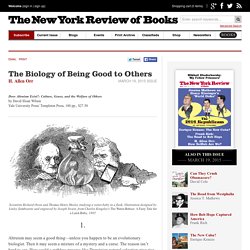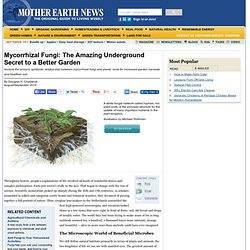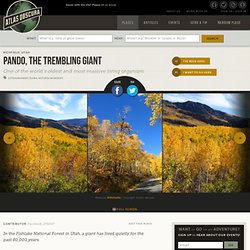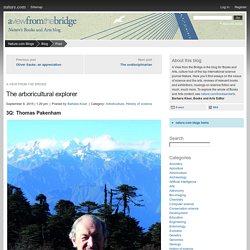

Research. Biomimicry. Biomimicry. Technology. Biomimicry. Excerpt: Mycorrhizae (I want to be a fungus!) The Biology of Being Good to Others by H. Allen Orr. Does Altruism Exist?

: Culture, Genes, and the Welfare of Others by David Sloan Wilson Yale University Press/ Templeton Press, 180 pp., $27.50 Altruism may seem a good thing—unless you happen to be an evolutionary biologist. Living Future 15 | The Missing Link. Shiitake Mushroom Logs, Grow Your Own Shiitake Mushrooms - New. Mighty Mycorrhiza. One of the great things about gardening — in addition to creating beautiful landscapes and delicious, healthy food — is its educational opportunities.

Your friendly Planet Natural blogger has gardened on and off since my childhood some (garbled) years ago and I learn something new almost every time I pick up a how-to book, talk to a companion gardener, or get my hands in the dirt. Best are the things that I once knew nothing about and, as I explore them further, result in deepening levels of understanding and wonder. Current example? Mycorrhizal Fungi: The Amazing Underground Secret to a Better Garden. Throughout history, people’s explanations of life involved all kinds of wonderful stories and complex philosophies.

ECB mycorrhizas. Environmental & Community Biology 1h [To support Jim Deacon's lectures] What do all these things have in common?

A mycorrhiza can be defined as a mutualistic association between a fungus and a root or other underground organ of a plant. Typically, the fungus penetrates the root tissues and obtains at least part of its carbon requirements from the plant, while the plant benefits by enhanced uptake of mineral nutrients via the fungal hyphae that grow through the soil. Micorrizas. Ecosystems. Mycorrhizal networks and learning. After reading Brian’s post about mycorrhizal networks I went digging around through some older papers and found this, an exploratory piece by my doc student Erin Brewer circa 2003.

(Erin was my co-author on the Online Self-Organizing Social Systems paper.) As we examined biological models (like self-organization) to explain what we saw happening in informal online learning communities, mycorrhizal networks caught our attention. I’d forgotten about the topic until recent discussions in the ed tech blogosphere brought it back to memory… Symbiosis and Learning Communities Individuals, groups, and communities all form symbiotic relationships for a wide variety of reasons but the underlying impetus is resource sharing. First, I will provide a general overview of the traditional taxonomy of symbiosis. Aprendizaje rizomático.
For Naturephiles Only: A Typeface Made Of Trees. Irish artist Katie Holten's new book About Trees is not just a book about trees—it's written in Trees.

Utilizing 26 different tree species to represent the different letters in the Roman alphabet, the texts in About Trees range from Jorge Luis Borges and Ursula K. Pando, the Trembling Giant. In the Fishlake National Forest in Utah, a giant has lived quietly for the past 80,000 years.

The Trembling Giant, or Pando, is a enormous grove of quaking aspens that takes the “forest as a single organism” metaphor and literalizes it: the grove really is a single organism. Each of the approximately 47,000 or so trees in the grove is genetically identical and all the trees share a single root system. While many trees spread through flowering and sexual reproduction, quaking aspens usually reproduce asexually, by sprouting new trees from the expansive lateral root of the parent.
The individual trees aren’t individuals, but stems of a massive single clone, and this clone is truly massive. Spanning 107 acres and weighing 6,615 tons, Pando was once thought to be the world’s largest organism (now usurped by thousand-acre fungal mats in Oregon), and is almost certainly the most massive. The arboricultural explorer : A view From the Bridge. Thomas Pakenham at the top of Mount Maenam, Sikkim, hunting rhododendrons, 2013.

Thomas Pakenham Thomas Pakenham is a historian and arboriculturalist whose books include the bestselling Meetings with Remarkable Trees (2003). NASA Explains Why You Should Live On A Tree-Lined Street. Forget global warming.

Well, don’t forget it completely, because it’s probably going to kill us all. But forget it for a moment, while we take a look at another climate-related effect: city warming. A new NASA study shows that trees and plant-life are essential to keeping our cities cool and not just because they’re nice to sit under on a sunny day. Cities are like giant storage heaters made up of what NASA calls "impervious surfaces"—roads, buildings, concrete.
This causes what's known as the urban heat island effect, where a city’s temperature is set a few degrees above the surrounding countryside thanks to the heat retention of all that city infrastructure. But the new study shows that the amount of green space in the city has a big effect on just how hot our urban heat islands get. "Everybody thinks, 'urban heat island, things heat up.' What the team found is that trees and other vegetation are essential for keeping our cities cool. Tree-Listening. Biomimicry. Evolutionary Computing. Bionics/Biomimetics/Biomimicry. Biomimicry. Biomimesis. Biomimicry - the future is before us. Biomimicry. Biomimicry 3.8. Biomimicry examples.